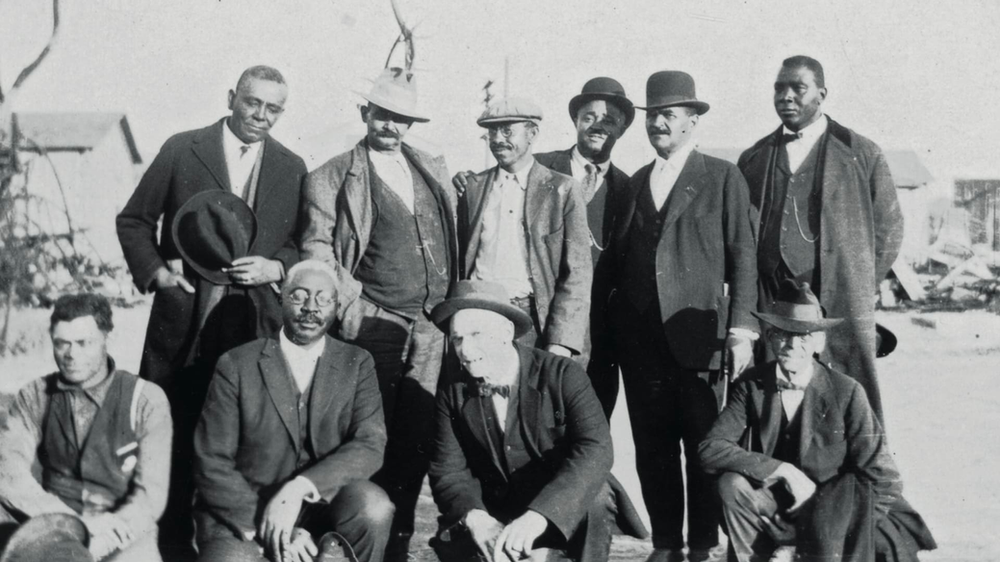
Photo: O.W. Gurley, a Founder of the Greenwood District aka Black Wall Street (shown here circa 1921, bottom row, second)
Exactly a century ago today, the wealthiest Black neighborhood in the United States, went from being the American dream to a violent nightmare.
Black advancement has long been a trigger for whites in America. This is undoubtedly what sparked the 1921 Tulsa Race Massacre which occurred over the span of 18 hours from May 31 to June 1, 1921. A white mob attacked the residents, homes and businesses in the predominantly Black Greenwood neighborhood of Tulsa, Oklahoma, in what remains one of the worst acts of racial violence in US history. It’s alarming how little many people know about these events, as it has been a subject long avoided in schools and history books. Here are 10 things you should know about the Tulsa Race Massacre:
1. The creation of Black towns in Oklahoma
After the Civil War, African Americans left the South in vast numbers for the “promised land” of the West. Racial violence, economic hardship and injustice fueled this extensive migration from states such as Mississippi, Tennessee, Texas, Arkansas and Louisiana. Many African Americans settled in over 20 towns throughout Oklahoma. This settlement of Oklahoma’s all Black towns is tied to the Trail of Tears, the name given to the journey made by Native Americans forced to give up their lands east of the Mississippi River and migrate to an area in present day Oklahoma as part of Andrew Jackson’s Indian removal policy. All Black towns formed in Indian Territory when the former slaves of the Five Tribes (Cherokee, Choctaw, Chickasaw, Creek, and Seminole Indians) settled together for mutual protection and economic security.
2. Black Wall Street was built for Black people by Black people
The Greenwood district in Tulsa came to be known as Black Wall Street, one of the most affluent and thriving majority African American communities in the U.S. Booker T. Washington referred to the Greenwood neighborhood as “Negro Wall Street.” The creation of this powerful Black community was intentional. “In 1906, O.W. Gurley, a wealthy African American from Arkansas, moved to Tulsa and purchased over 40 acres of land that he made sure was only sold to other African Americans,” writes Christina Montford in the Atlanta Black Star. Gurley provided opportunities for those migrating from the harsh oppression of the South. The average income of Black families in the area exceeded “what minimum wage is today.” As a result of segregation, a “dollar circulated 36 to 100 times” remaining in Greenwood “almost a year before leaving.” Even more impressive was the fact that the “state of Oklahoma had only two airports,” yet “six Black families owned their own planes.”
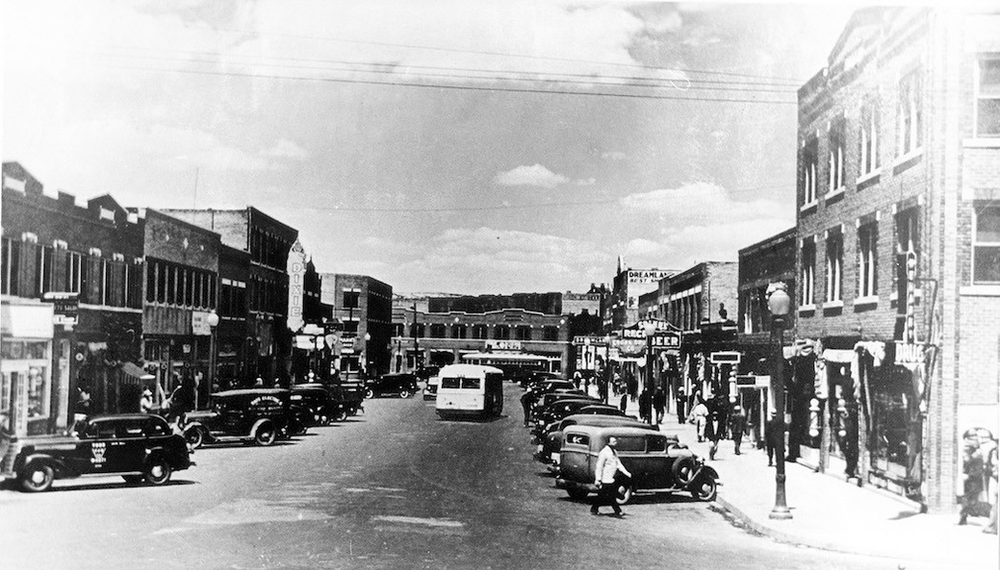
Photo: Black Wall Street, Tulsa, Oklahoma
3. The racially charged arrest of a teenage boy sparked the Tulsa Race Massacre
On May 30, 1921, a Black teenager named Dick Rowland took a break from his shoe stand inside a pool hall and walked to Drexel Building to use the only public restroom for Black people in segregated Tulsa. He entered an elevator operated by a young white woman named Sarah Page. While it remains unclear exactly what happened between them on the elevators, Page screamed and Rowland fled the scene. There is no record of what Page told police, however the next morning Rowland was arrested and accused of assaulting her. This infuriated white residents of Tulsa, and a crowd gathered in front of the Tulsa County Courthouse where Rowland was being held.
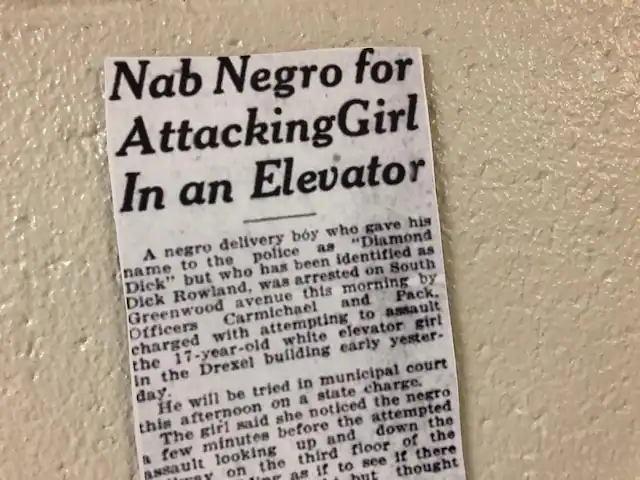
Photo: Historians say this 1921 Tulsa Tribune newspaper story helped incite the massacre (DeNeen L. Brown)
4. The riots began when a white man attacked a Black World War I veteran
As evening fell and the mob of angry white residents outside the courthouse grew, a group of about 75 armed Black men also went to the courthouse to offer their help in guarding Rowland from the mob who were likely looking to lynch him. They were met by about 1,500 white men, many of whom were also armed. Shots were fired and chaos erupted forcing the wildly outnumbered Black men to return to Greenwood. Over the next several hours, groups of white Tulsans committed countless acts of violence against Black residents and their communities. As dawn broke on June 1, thousands of white citizens poured into the Greenwood District, looting and burning homes and businesses over an area of 35 city blocks.
5. Following the Tulsa Race Massacre, approximately 9,000 Black residents became homeless
According to a later Red Cross estimate, 1,256 houses were burned, 215 others were looted but not torched. The offices of two newspapers, more than a dozen doctors, dentists, lawyers, real estate and other professionals were destroyed. The fires started in the riots also destroyed a school, a post office, a YMCA, a library, a hospital, half a dozen churches, hotels, stores and many other Black owned businesses. In total, the cost of property damage was estimated at more than $48 million in 2021 dollars!
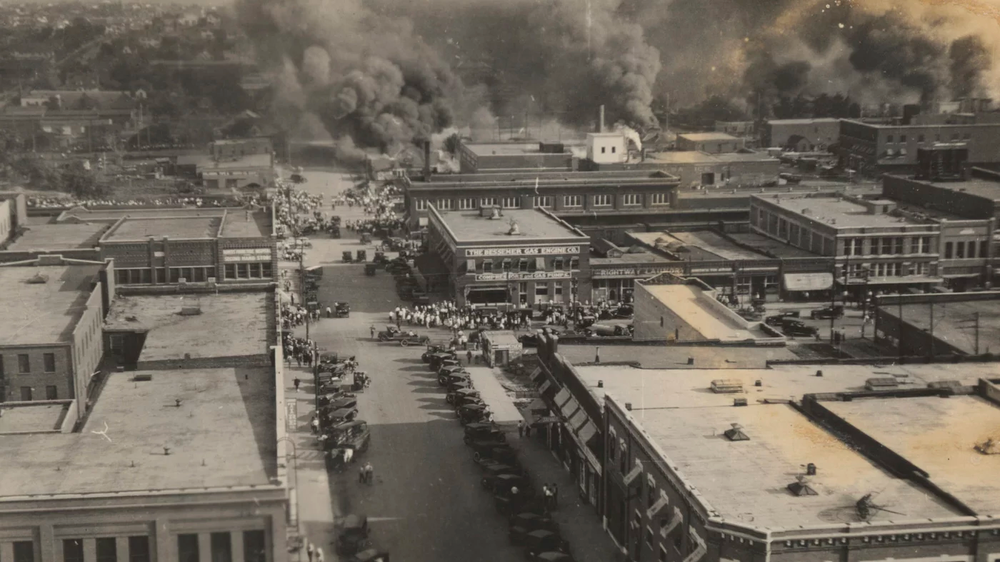
Photo: Crowds watching the fires during the June 1, 1921, Tulsa Race Massacre
6. Many lost their lives as a result to this senseless act of racial violence
In the hours following the Tulsa Race Massacre, all charges against Dick Rowland were dropped. Police concluded that Rowland had most likely stumbled into Sarah Page or accidentally stepped on her foot. Page also wrote a letter exonerating him. Rowland was kept safe by guards in jail during the riots and reportedly left Tulsa the next morning, never to return. The Oklahoma Bureau of Vital Statistics officially recorded 36 dead, however historians estimate the death toll may have been as high as 300.
7. The devastating massacre was largely forgotten for half a century
For almost 50 years after the massacre, there was a concerted effort to downplay the atrocities that occurred in Tulsa. The newspaper that helped to spark the riot, the Tulsa Tribune, removed the front page story of May 31 from its bound volumes. State police and militia archives about the massacre also disappeared. Oklahoma history textbooks published during the 1920s and 1930s failed to mention the event at all. The massacre didn’t even receive much attention from scholars until the 1970s. In 1997, the Oklahoma legislature established the 1921 Tulsa Race Riot Commission, which was renamed in 2018 to the 1921 Race Massacre Commission.
8. A 107-year-old survivor of the Tulsa Race Massacre recently testified before Congress
On May 19, 2021, Viola Fletcher testified before Congress about the massacre.
“I am a survivor of the Tulsa race massacre,” Fletcher said. “Two weeks ago, I celebrated my 107th birthday. Today, I’m visiting Washington, D.C., for the first time in my life. I’m here seeking justice, and I’m asking my country to acknowledge what happened in Tulsa in 1921.”
https://www.youtube.com/watch?v=xZV8_nAQ2ys
9. The city of Tulsa is now exhuming bodies as the first step down a long road to justice
On Tuesday, the city of Tulsa will begin exhuming bodies linked to the Tulsa Race Massacre. Though ground penetrating radar identified 12 coffins, a funeral home ledger suggests there may be 18 bodies in the area. The excavation team is preparing for the possibility of finding as many as 30.
“I commend the city for doing something, but it is apparent that justice for the Greenwood community and for the survivors and for those who were killed is not a priority,” said the Rev. Robert Turner of Historic Vernon AME Church, the basement of which survived the church’s torching during the attack. He is also a member of the Tulsa Mass Graves Oversight Committee.
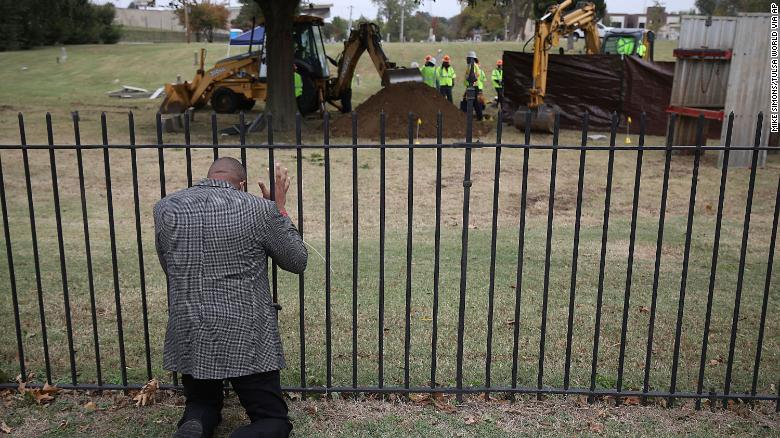
Photo: The Rev. Robert Turner prays as crew conduct a test excavation in October
10. Russell Westbrook makes history with documentary, Tulsa Burning
On Sunday, the documentary Tulsa Burning: The 1921 Race Massacre executive produced by the Washington Wizards guard aired on the History Channel. Westbrook first heard about the riots as an adult. “The Tulsa Race Massacre was not something I was taught about in school or in any of my history books,” he said in a statement when the documentary was announced in February. “It was only after spending 11 years in Oklahoma that I learned of this deeply troubling and heartbreaking event. This is one of many overlooked stories of African Americans in this country that deserves to be told. These are the stories we must honor and amplify so we can learn from the past and create a better future.”
The two hour documentary utilizes more than a dozen interviews, historical photographs and reenactments to shed light on the historically ignored story of Black Wall Street.
Powered by WPeMatico


